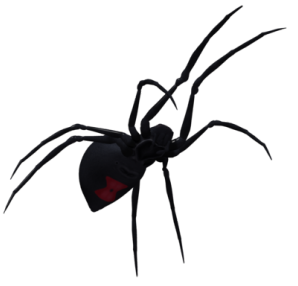Country of Origin: Nicaragua and Honduras
Natural Environment and Behavior:
The curlyhair tarantula, scientifically known as Tliltocatl albopilosus (formerly Brachypelma albopilosum), is a captivating species of tarantula commonly recognized for its distinctive appearance and fascinating behaviors. This plump-bodied spider is adorned with dark brown to black bristles that transition from a lighter shade in juveniles to a darker hue as they mature.
What sets the curlyhair tarantula apart is its striking golden-bronze sheen, which is attributed to the presence of longer gold bristles that cover its entire body. These bristles, most densely concentrated on its hind legs, contribute to its alluring and unique aesthetic.
As a primarily terrestrial species, the curlyhair tarantula doesn’t construct extensive burrows like some of its relatives. However, it may occasionally create shallow retreats or seek refuge in natural crevices or existing burrows within its habitat. Nevertheless, its main activities take place on the ground as it explores its surroundings and actively forages for prey.
Being a nocturnal opportunist, the curlyhair tarantula relies on ambushing its prey, which consists of insects and small vertebrates. Each leg possesses a specialized area at its end, which is highly sensitive to smell, taste, and vibrations. This sensory apparatus helps the tarantula detect the presence of potential prey in its vicinity.
Once the tarantula seizes its prey with its pedipalps, the front limbs specialized for capturing prey, it delivers venom through its two hollow fangs. The venom serves a dual purpose—paralyzing the prey and initiating the digestion process. Subsequently, the tarantula utilizes its unique feeding mechanism to consume the proteins and fats of its prey, leaving behind a small ball of undigested body parts.
While generally docile, the curlyhair tarantula possesses a defense mechanism to protect itself when threatened. It deploys its hind legs to kick off urticating hairs from its abdomen. These irritating hairs, if they make contact with the eyes of a predator, can cause temporary blindness. Additionally, they can induce a rash on the skin of any creature that disturbs or handles the tarantula.
The curlyhair tarantula, with its captivating appearance and intriguing behaviors, exemplifies the marvels of the natural world. Its ability to adapt to a terrestrial lifestyle, coupled with its hunting techniques and defense mechanisms, underscores the diversity and complexity of arachnid life. Observing and studying the curlyhair tarantula provides us with valuable insights into the remarkable adaptations and ecological roles of these fascinating creatures.
Longevity:
Females: 20 years, males: 10 years.
Size:
Up to 15cm.
Husbandry:
Keep at 70-80% humidity and 24-26°C for temperature, use a mix of peat moss and vermiculite.
Enclosure Size:
5-10 cm for spiderlings, 15-20 cm for juveniles, and 30*30*30 cm or more for adults.
